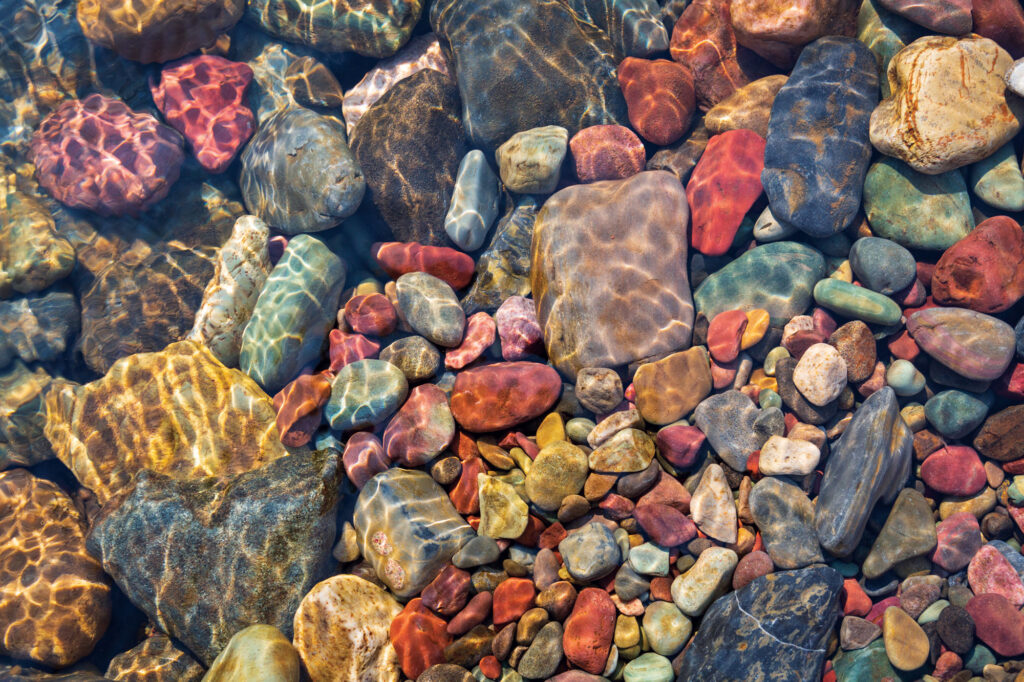“River Rocks” by Robin Conover, Canon EOS 5D Mark IV
EF 24-70 mm at 200 mm
ƒ2.8 L USM lens, ISO 200
ƒ6.3 at 1/200 second, handheld
Glacier National Park in Montana is a haven for nature lovers, tourists and photographers alike and a bucket list item for me. Sadly, some of the namesake glaciers in the park have receded an estimated 80% since the 1880s, according to the National Park Service. Some will disappear in my lifetime. Seeing the glaciers was definitely part of the draw for me to visit this park, but the ecology of the region and its rivers also quickly won me over.
Wading in the Flathead River in June is an exhilarating experience, to say the least. With incredible vistas all around, the river flows clear and cold! Its sources include melting snowpack as well as numerous springs and tributaries. The water temperature can vary quite a bit this time of year, but it is generally about 50 degrees.
The color in the rocks attracted me, and finding just the right combination of dappled sunlight and oddly shaped glacial rocks tempted me into the river. Staying close to the edge and out of swifter moving water, I took my camera in hand and began to photograph the patterns created as the late afternoon sunlight filtered through the river’s surface as the water flowed over the rocks.
Finding an interesting composition was a challenge, but I used a basic photographer’s trick. I knew I was reacting to the colors because I had not seen rocks quite like these before, so I took extra time to scan each edge of my viewfinder — from corner to corner — to make sure I included everything I wanted and excluded from the shot anything that was distracting.
The next time you have your camera or smartphone out, try this technique by beginning with the upper left corner and moving your eye clockwise to the upper right, lower right, lower left and then back up to the upper left. With lots of practice, this technique will become second nature. It will improve your compositions as you make quick decisions through the viewfinder to eliminate distractions and include interesting elements.
Once I settled upon this composition, I chose a shutter speed that would be fast enough to capture the sunlight patterns cast on each rock. The crystal-clear water and low angle of the sunlight emphasized the fascinating colors and textures.
Doing a little research in the park’s visitor center, I learned that these rocks form naturally over time and could have traveled down from the glaciers that once covered the upper elevations of the park centuries ago. The stones are largely composed of sandstone, shale and limestone. The rich colors are derived from various minerals and sediment present as the rocks were formed from glacial movement, erosion and weathering.
I stayed in the river as long as I could, finding new color combinations and compositions. In truth, I was only in the water about 15 minutes before the cold ran me out. Luckily, the light was also fading, so I didn’t regret the session being cut short.



